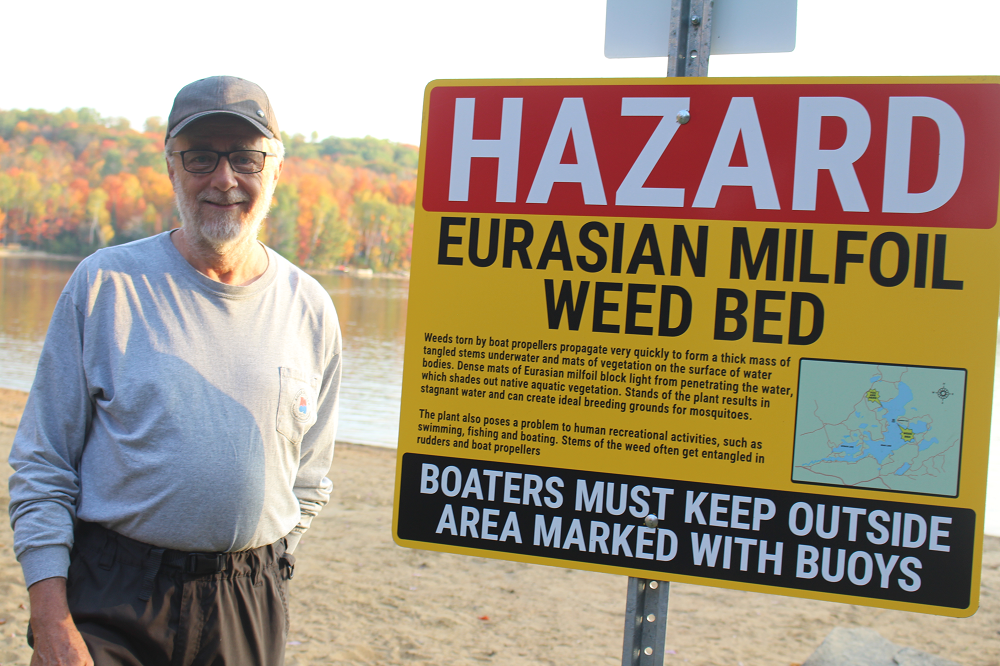The Drag and Spruce Lake Property Owners’ Association (DSLPOA) is pulling out all the stops in its fight against Eurasian Water Milfoil, raising more than $32,000 to combat the invasive species.
After years of effort, the association launched a new project this summer to tackle Eurasian Water Milfoil (EWM), an underwater plant that has plagued lakes across the province. To combat it, the association has partnered with Trent University to use biodegradable, coconut fibre matting to suppress its growth. It has hired a specialized dive company to install the mats, costing thousands of dollars.
It was a long process for the association, which first confirmed the species at its lake in 2017 and worked to get a permit this year from the Ministry of Natural Resources and Forestry to install the mats. DSLPOA working group member Jim Miners said he is pleased with how the project has gone so far, though added there is a lot of work to do.
“There’s no easy solution. There’s no onetime application and we’re done. It has the potential to become an ongoing project,” Miners said.
The plant competes with native species and its decomposition can reduce oxygen levels in lakes, harming fish, Miners said. An outbreak can deflate property values by five to 10 per cent over time, he added. Miners said the plant has spread to four locations in Drag Lake, likely by boating.
“If you don’t take some steps, some way to control the growth of this species, it really is invasive and it really will take over an area,” Miners said.
The organization installed matting this year on a trial basis, covering one-third of a large bed at Harris Beach. The matting is supposed to help starve the plant of resources, though Miners said there is a concern the plant could adapt and grow over the matting. Besides that, the association has also launched a public awareness campaign, spreading information and putting signs up.
Lake steward Bert Bicknell said that has gone well, with celebrity decorators Colin and Justin getting involved with an Instagram post.
“Cottagers have been actively engaged and supportive of the program and have identified additional sites of concern where EWM outbreaks may be occurring,” Bicknell said.
The plant has not spread far in Haliburton County, Miners said.
The project this year must wrap up by Oct. 1, the limit of the ministry permit. After that, the association will strategically plan for its approach next year. Although they have raised more than $32,000, they hope to reach $50,000 to carry on the fight.
“For me to call it successful, I need to believe that we have enough people,” Miners said. “So that we can, together, take on the challenges controlling Eurasian Water Milfoil.”





